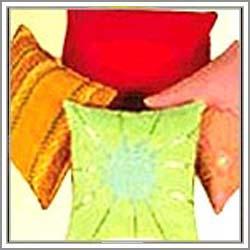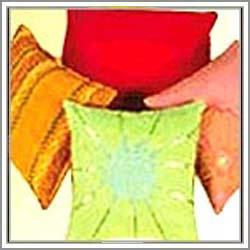Parshwanath Dyestuff Industries
Product Range
Fact Sheet
- Location:Gujarat, India
- Year of Establishment:1997
- Business Type:Manufacturer
- Main Products:Reactive Dyes, Food & Lake Colour
- Reviews & Rating:
Get Verified, Sell more with
- Buyer's trust
- Faster conversions
- Better Rankings
- More
Its Free
Verify NowSunfast & Non Benzidine Direct Dyes
Direct dyes are another class of dyes, one of the two types of dyes that are mixed in 'all purpose' dyes such as Rit. (The other type in the mixture is an acid dye, which will not stay in any cellulose fiber for long.)
- FOB PriceNA
- Min Order QuantityNA
- Payment TermsNA
Other Details
Direct dyes are another class of dyes, one of the two types of dyes that are mixed in 'all purpose' dyes such as Rit. (The other type in the mixture is an acid dye, which will not stay in any cellulose fiber for long.) The colours of direct dyes are duller than those provided by fiber reactive dyes, and the washfastness is poor - expect anything dyed with them to 'bleed' forever. The one advantage is that direct dyes may be more lightfast, that is, resistant to fading in the light, than fiber reactive dyes. The "direct dye" classification in the Colour Index system refers to various planar, highly conjugated molecular structures that also contain one or more anionic sulfonate group. It is because of these sulfonate groups that the molecules are soluble in water. Though most direct dyes still can be obtained in powder form, it is increasingly popular to receive them as liquid concentrates. The advantage of concentrates is that they are easy to handle and meter. The disadvantage is that the surfactants and co-solvents needed to keep the dye concentrates stable may interfere with retention and sizing in the case of very deeply coloured grades.
Today, all food colour additives are carefully regulated by authorities to ensure that foods are safe to eat and accurately labeled.
Direct dyes are used on cellulose fibers such as cotton, rayon, and linen. They lack the permanence of the cold water fiber reactive dyes which most serious dyers prefer for use on cellulose fibers, but in some cases they have advantages that make their use worthwhile. For example, while many of the direct dyes are not very lightfast, there are some dyes in the class that may be more lightfast than similar shades of fiber reactive dyes. All direct dyes perform rather poorly with respect to washfastness. Without an appropriate after-treatment, direct dyes bleed a little with every washing, losing their brightness and endangering other clothes washed in the same load. However, there are special after-treatments which may be used to solve this problem. (Vinegar is not among them! In spite of claims you may see to the contrary, you cannot use vinegar to set any dye on cotton or other cellulose materials.) A product called Retayne, which is an ionic bulking agent which essentially "glues" the dye into the fiber, works very well to make fabric dyed with direct dyes washable without bleeding of the dye.
The name 'direct dye' alludes to the fact that these dyes do not require any form of 'fixing'. They are almost always azo dyes, with some similarities to acid dyes. They also have sulphonate functionality, but in this case, it is only to improve solubility, as the negative charges on dye and fibre will repel each other. Their flat shape and their length enable them to lie along-side cellulose fibres and maximize the Van-der-Waals, dipole and hydrogen bonds. Below is a diagram of a typical direct dye. Note that the sulphonate groups are spread evenly along the molecule on the opposite side to the hydrogen bonding -OH groups, to minimize any repulsive effects.
Images





